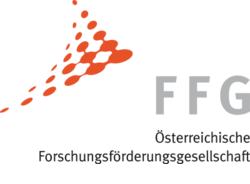Recent advances in 3D X-ray computed tomography (XCT) hardware have enabled applying the principles of Talbot–Lau grating interferometry (TLGI) in the first commercially available laboratory XCT scanning devices for industrial applications. One of the first devices of this new category has been installed at the University of Applied Sciences Upper Austria – Campus Wels (FHW) in January 2015. Grating interferometry methods possess a great potential in non-destructive testing of materials as they provide three complementary modalities in one scan (see Figure 1): attenuation contrast (AC) resulting from attenuation of X-rays through a specimen, differential phase contrast (DPC) containing information about refraction of X-rays, dark-field contrast (DFC) providing information about X-ray scattering.
Especially for the design of new fiber-reinforced polymer (FRP) materials and components, detailed investigations and characterizations of FRP materials are vital due to rising application demands regarding efficiency, safety, environment, and comfort.
The complementary nature of AC, DPC and DFC imaging modalities opens new possibilities for the characterization of material features that cannot be resolved by conventional absorption-based XCT: DPC is highly sensitive regarding changes in the material, e.g., delamination or fractures; DFC shows high responses for X-ray scattering, e.g., micro pores or fiber bundles. The combination and investigation of all three modalities thus have the potential to enable a much more detailed material analysis compared to conventional XCT. However, while TLGI XCT is highly promising as a non-destructive testing tool for investigation of composite materials, current scanning and processing procedures suffer from several major disadvantages that prevent exploiting the full potential of this innovative method, which will be addressed in the advanced multimodal data analysis and visualization of composites based on grating interferometer micro-CT data (ADAM) project:
1) Compared to XCT, TLGI XCT requires the acquisition of more projections, e.g., for a fixed angle, multiple X-ray images have to be acquired (multiple grating shifts), which not only increases the X-ray dose but also the acquisition time. In ADAM advanced tomographic reconstruction methods will be developed to generate high quality data even from a limited number of projection angles and for directly estimating the materials parameters of interest.
2) The different contrasts AC, DPC, DFC are reconstructed independently from each other, after which they are combined for further analysis (Figure 2 and 3). As a result, reconstruction artefacts in one of the contrasts will propagate through the processing chain, affecting any quantification of the resulting combined image. ADAM will develop smart data fusion techniques compensating on reconstruction artefacts, as well as combining and comparing visualization techniques and visual analysis techniques for AC, DPC and DFC-data of fiber reinforced composites including bi- and multidirectional TLGI XCT data.
3) While the daily industrial workflow for characterizing fiber reinforced composites (see Figure 4) relies on commercial software tools that tweak simple segmentation methods for inspecting slice images, ADAM will develop novel workflows as well as smart and intuitive visual analysis techniques required to handle and integrate the three large datasets of AC, DPC, DFC and analyze the extracted features of interest as fibers, pores, voids and fiber bundles.

Figure 4: Conventional XCT analysis workflow: single mode (attenuation information only).








